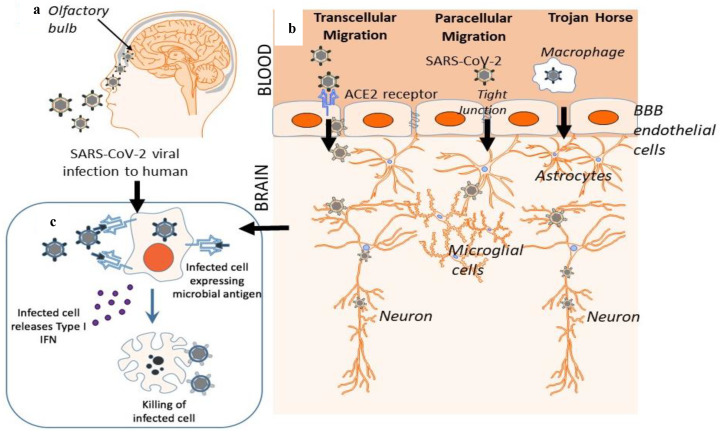Figure 1.
Potential routes of severe acute respiratory syndrome coronavirus 2 (SARS-CoV-2) to the central nervous system (CNS) and preliminary activation of the immune system. (a) Once SARS-CoV-2 is inhaled into the nasal cavity, the virus may travel to the CNS by retrograde axonal transport along sensory and olfactory nerves via the cribriform plate, a bone structure located nearby the olfactory bulb. In this pathway, SARS-CoV-2 would bypass the blood-brain barrier (BBB). (b) Following a respiratory tract infection characteristic of the virus, SARS-CoV-2 may disseminate into the systemic circulatory system. Upon reaching the BBB, SARS-CoV-2 may invade host endothelial cells by interaction with the angiotensin-converting enzyme 2 (ACE2) receptor, altering tight junction proteins formed by BBB endothelial cells, or phagocytosis by immune cells. These three mechanisms are termed transcellular migration, paracellular migration, and the Trojan horse strategy, respectively. (c) In both pathways, cells infected with SARS-CoV-2 release type I interferons, which alert neighboring and immune cells to the presence of pathogen. Under normal conditions, infected cells are eliminated by host immune cells to prevent further replication and the spread of SARS-CoV-2.

